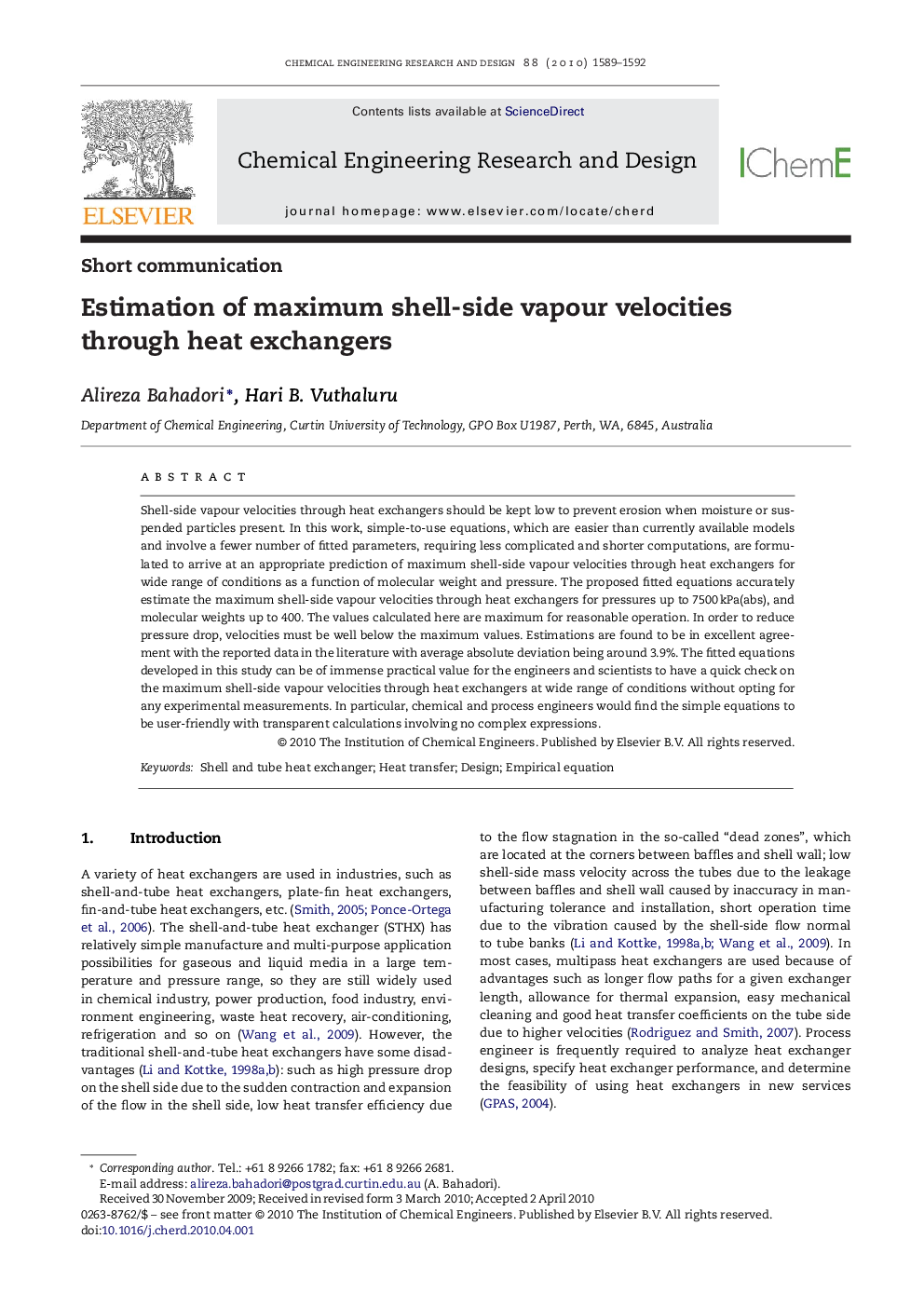| Article ID | Journal | Published Year | Pages | File Type |
|---|---|---|---|---|
| 621008 | Chemical Engineering Research and Design | 2010 | 4 Pages |
Shell-side vapour velocities through heat exchangers should be kept low to prevent erosion when moisture or suspended particles present. In this work, simple-to-use equations, which are easier than currently available models and involve a fewer number of fitted parameters, requiring less complicated and shorter computations, are formulated to arrive at an appropriate prediction of maximum shell-side vapour velocities through heat exchangers for wide range of conditions as a function of molecular weight and pressure. The proposed fitted equations accurately estimate the maximum shell-side vapour velocities through heat exchangers for pressures up to 7500 kPa(abs), and molecular weights up to 400. The values calculated here are maximum for reasonable operation. In order to reduce pressure drop, velocities must be well below the maximum values. Estimations are found to be in excellent agreement with the reported data in the literature with average absolute deviation being around 3.9%. The fitted equations developed in this study can be of immense practical value for the engineers and scientists to have a quick check on the maximum shell-side vapour velocities through heat exchangers at wide range of conditions without opting for any experimental measurements. In particular, chemical and process engineers would find the simple equations to be user-friendly with transparent calculations involving no complex expressions.
